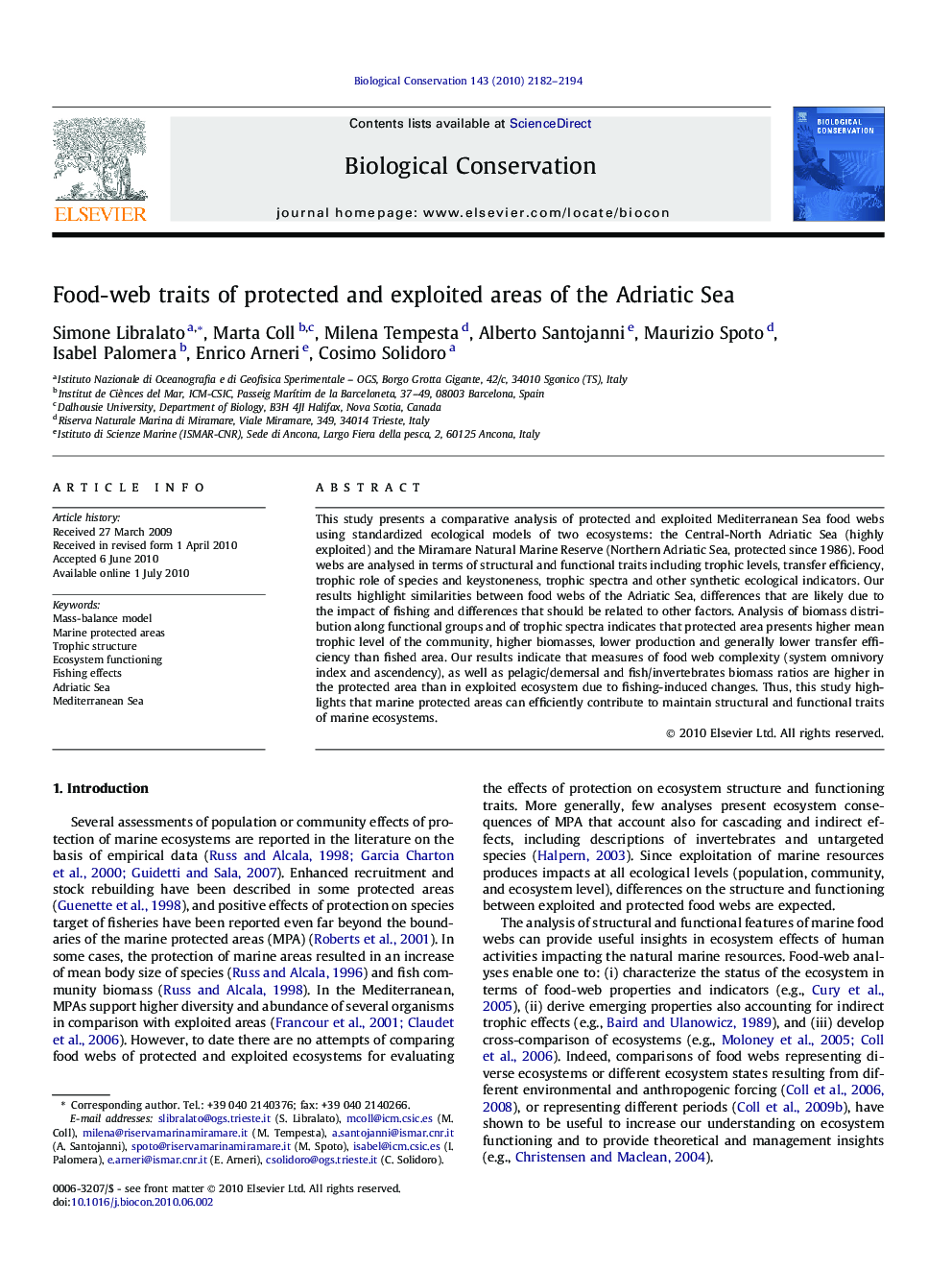| Article ID | Journal | Published Year | Pages | File Type |
|---|---|---|---|---|
| 4385826 | Biological Conservation | 2010 | 13 Pages |
Abstract
This study presents a comparative analysis of protected and exploited Mediterranean Sea food webs using standardized ecological models of two ecosystems: the Central-North Adriatic Sea (highly exploited) and the Miramare Natural Marine Reserve (Northern Adriatic Sea, protected since 1986). Food webs are analysed in terms of structural and functional traits including trophic levels, transfer efficiency, trophic role of species and keystoneness, trophic spectra and other synthetic ecological indicators. Our results highlight similarities between food webs of the Adriatic Sea, differences that are likely due to the impact of fishing and differences that should be related to other factors. Analysis of biomass distribution along functional groups and of trophic spectra indicates that protected area presents higher mean trophic level of the community, higher biomasses, lower production and generally lower transfer efficiency than fished area. Our results indicate that measures of food web complexity (system omnivory index and ascendency), as well as pelagic/demersal and fish/invertebrates biomass ratios are higher in the protected area than in exploited ecosystem due to fishing-induced changes. Thus, this study highlights that marine protected areas can efficiently contribute to maintain structural and functional traits of marine ecosystems.
Keywords
Related Topics
Life Sciences
Agricultural and Biological Sciences
Ecology, Evolution, Behavior and Systematics
Authors
Simone Libralato, Marta Coll, Milena Tempesta, Alberto Santojanni, Maurizio Spoto, Isabel Palomera, Enrico Arneri, Cosimo Solidoro,
